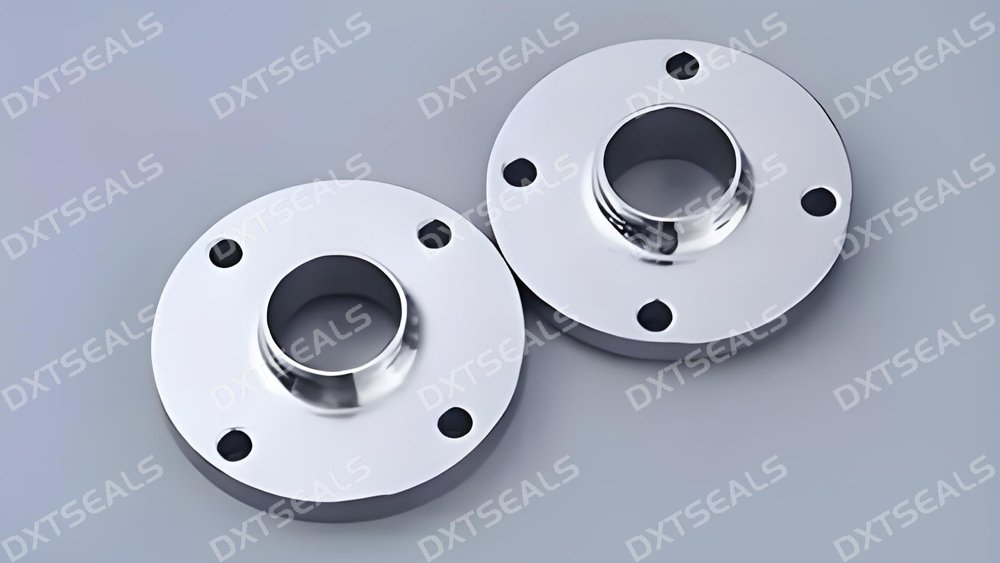
When designing or manufacturing sealing components, one of the most critical decisions lies in choosing the right metallic material. Among the common choices, stainless steel and carbon steel are widely used for housings, gland rings, backing rings, and support structures in sealing systems. While both materials are strong and reliable, their performance varies significantly depending on the operating environment.
This article from DXTSEALS provides a clear comparison between stainless steel and carbon steel, helping engineers make the right material selection for sealing applications.
1. Key Properties of Stainless Steel
Stainless steel is known for its high corrosion resistance, making it the preferred choice in demanding environments.
-
Corrosion Resistance: Excellent resistance to water, steam, chemicals, and aggressive media.
-
Temperature Resistance: Performs well under both low and high temperatures.
-
Strength & Durability: Good toughness and wear resistance, especially in harsh conditions.
-
Cost: Higher initial cost compared to carbon steel.
-
Applications: Oil & gas, chemical processing, marine, and food industries where corrosion resistance is essential.
2. Key Properties of Carbon Steel
Carbon steel offers high strength at lower cost, making it a practical choice for many sealing systems.
-
Corrosion Resistance: Limited; prone to rust in humid or chemical-rich environments unless coated or treated.
-
Temperature Resistance: Performs well under moderate conditions but may degrade faster in high-temperature or corrosive environments.
-
Strength & Hardness: High mechanical strength and load-bearing capacity.
-
Cost: Lower than stainless steel, making it a cost-effective option.
-
Applications: Hydraulic systems, machinery, and industrial equipment in controlled environments.
3. Stainless Steel vs. Carbon Steel: Performance Comparison Table
| Property | Stainless Steel | Carbon Steel |
|---|---|---|
| Corrosion Resistance | Excellent (ideal for harsh environments) | Limited (requires coating/protection) |
| Strength | High, with good toughness | Very high load-bearing capacity |
| Temperature Resistance | Wide range, including high temp. | Moderate, less suitable for extreme heat |
| Durability | Long-lasting, low maintenance | Shorter lifespan if exposed to moisture/chemicals |
| Cost | Higher | Lower |
| Typical Applications | Oil & gas, chemical, marine, food | Hydraulic, automotive, general industry |
4. How to Choose Between Stainless Steel and Carbon Steel for Sealing Applications
When selecting materials for sealing structures such as flange insulation kits, gland rings, or backing components, consider the following factors:
-
Environment: For high humidity, seawater, or chemical exposure → Stainless Steel is recommended.
-
Budget: If cost control is a priority and the environment is non-corrosive → Carbon Steel is a practical choice.
-
Service Life: For long-term stability with minimal maintenance → Stainless Steel is superior.
-
Mechanical Load: For applications requiring high strength but not exposed to corrosion → Carbon Steel is sufficient.
✅ DXTSEALS Recommendation: Always evaluate the working medium, pressure, temperature, and service conditions before deciding between stainless steel and carbon steel.
5. Conclusion
Both stainless steel and carbon steel play important roles in sealing system design. While stainless steel ensures durability and corrosion resistance, carbon steel offers strength and cost efficiency. The right choice depends on application environment, cost considerations, and performance requirements.
At DXTSEALS, we provide custom sealing solutions using both stainless steel and carbon steel materials, ensuring optimal performance for various industries.
📩 Contact DXTSEALS today to discuss the best material choice for your sealing applications.
